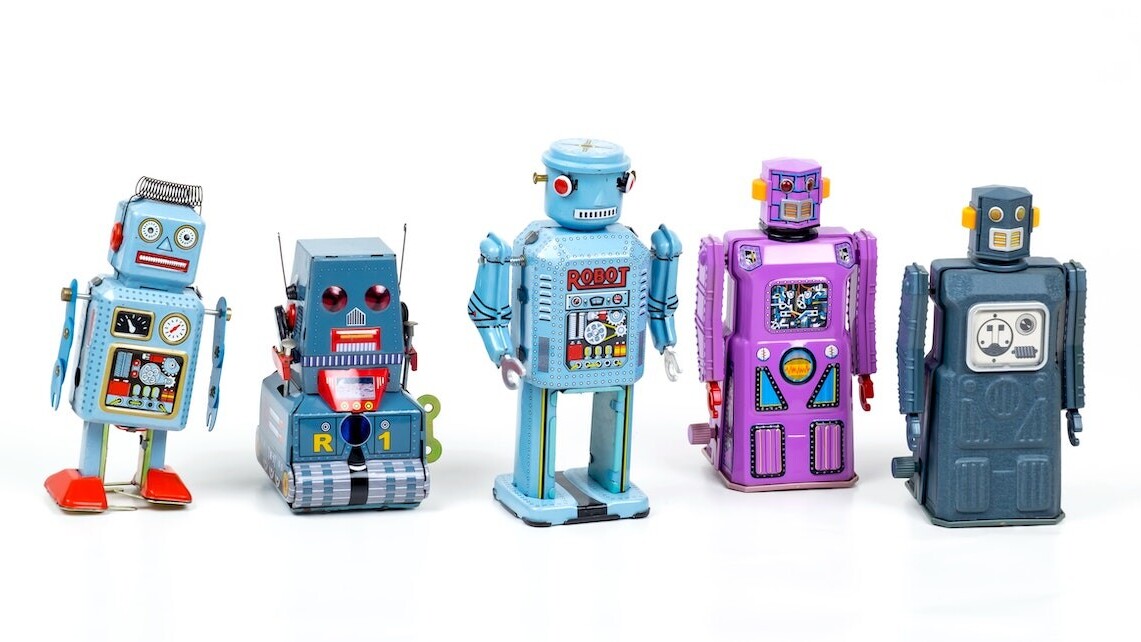
As remote working became the norm during the pandemic, more businesses have integrated AI to help things run smoothly and effectively. From improved chatbots and personalized virtual assistants in the retail and healthcare sectors to smart-learning software for education, AI systems can understand and support customers at an advanced level.
Even when AI is used to automate parts of marketing strategies, it’s clear that it’s a much more efficient way of collecting and analyzing data, allowing businesses to better understand their customers, and freeing up more time for interpreting the data and using it to improve every stage of the customer journey.
But are we taking advantage of this game-changing tech as much as we can?
With the ability to gather and analyze behavioral data, operate with real-time integration and prediction, and autonomously create a continuous loop of learning and improving, there are endless possibilities we can leverage to better serve our customers.
We spoke with four fast-growing scale-ups from Techleap.nl’s Rise Programme to find out some unique ways they’re harnessing the power of AI to ramp up their customer experience.
Using AI for better trading

Trading and investing in the stock market might seem a little daunting to the average person. That’s why BOTS is simplifying the experience for their users by providing AI bots they can use to make profits easily and autonomously. Colin Groos, CCO & Founder of BOTS told us:
“We democratize this world of professional, automated trading. The ordinary citizen can now trade via the BOTS app in the same professional manner as the banks and asset managers have been doing for many years. They say that when someone wins on the stock exchange, someone always loses. That’s true. Now BOTS makes this a level playing field. Anyone in the world will have access to professional strategies.”
The human brain really can’t compete — bots provide much faster calculations, can better assess risks, and predict the best trading strategies. Some bots even additionally use machine learning to continuously improve themselves as they gain more knowledge from the market. Anyone with a knack for creating algorithms is able to upload their own bot to the platform, either for themselves or for other customers to use — the benefit being the creator makes a profit each time another user trades with their bot.
When it comes to deciding which bot to invest in, you can browse through the strategies, checking the detailed descriptions that give you an explanation of the strategy, tips from the bot creator, risk level, and also past performance results. Once you’ve considered all of these factors, you’re ready to make your decision and start trading.
Using AI for a better experience at leisure venues

For visitors and venues alike, overcrowding can be both an annoyance and also a safety hazard. In light of the pandemic, crowd control is a much higher priority as venues begin to open up again.
With Convious’ Crowd Control tech, venues are able to optimize the customer experience and improve the spread, convenience, and safety of visitors. Through the use of AI and real-time data, the ticketing system automates capacity planning and improves traffic flow at leisure venues.
For example, AI-powered smart time slots detect patterns in visitors’ behavior and automatically increase ticket prices at peak times, encouraging visitors to book time slots that are less busy. Queuing for a parking spot in the car park is another headache for visitors, but thanks to AI analyzing data captured from customers’ parking behavior, this process is also made more efficient. Equally, heat-mapping and smart messaging helps to control the flow of crowds inside venues.
As more venues increasingly understand the importance of using AI for this, Convious has seen a spike in demand for their services. Camiel Kraan CEO at Convious told TNW:
“The majority of e-commerce platforms are data-driven and understand the power of data and how to use AI to optimize their results. They’re result-focused rather than feature-focused. However, most of the established ticketing vendors for venues are still feature-focused. In order to optimize results, you need marketing and data DNA at the core of your company, and in that regard, our offering is quite unique.”
Using AI to better understand and distribute video content

Customers don’t expect to struggle when searching for content, especially when it comes to the entertainment and media platforms they’re using. With so many options out there, if a specific video is proving hard to find, it’s likely users will drop off and look elsewhere.
As Roland Sars, CEO & Co-owner of Media Distillery explained, “consumers are becoming more critical and selective about how they spend their time, and on which platforms.”
That means media companies, especially the more traditional brands that are now adapting from TV to digital, have to step up their game to survive and thrive.
Media Distillery solves this problem by providing AI solutions that diagnose video content, from facial and speech recognition, to object, logo, and even subject recognition. For example, face recognition can be used to notify users when their favorite athletes, politicians, or pop stars are on TV. This makes it easier for an online platform to drill down, categorize, and personalize their video content recommendations, making it easier for their users to find exactly what they want to watch.
“The demands of the entertainment industry are rapidly changing, so it’s important for video platforms to really stand out and keep attracting viewers. At Media Distillery, we believe this starts with a better understanding of what content you have to distribute or display,” Sars told TNW.
Using AI to optimize home deliveries

Shopping online has never been easier, and e-commerce has grown exponentially over the last decade. Especially during the past year while most of the world experienced lockdowns, the number of online orders exploded, challenging logistics companies to step up their game in order to deal with the sheer volume of deliveries and meet customers’ expectations.
At the same time, as Michel Boerrigter Founder of Plotwise explained, this is also taking a toll on the environment, “the rise of e-commerce comes with a cost; without intervention, this unparalleled demand for last-mile transport will significantly increase traffic, greenhouse gas emissions, and congestion. Smart last-mile optimization is one of the key ingredients moving forward, and we at Plotwise have proven to be able to reduce this impact by up to 20%.”
Plotwise provides a Planning API to e-commerce companies and delivery operators, optimizing the last-mile delivery process. By focusing on service optimization, collecting more accurate data, and using machine learning to make better routing decisions, Plotwise is able to minimize errors and offer a better customer experience.
“I believe we need to shift our mindset from supply to demand. Customers want their packages delivered quickly, safely, and sustainably. We encourage our partners to diversify into urban network infrastructures and new modalities like e-bikes, low emission vehicles, or even foot deliveries and perhaps someday even drones. AI-powered last-mile home delivery is an absolute necessity to win in the new reality,” Boerrigter told TNW.
Final thoughts
It’s clear that AI is useful for all kinds of businesses, and is a powerful tool that takes both operations and results to the next level. As Boerrigter accurately described,
“Modern AI technology can turn today’s performance into tomorrow’s improvement. If you analyze tomorrow’s performance in the same way, you’ll create a learning loop that continuously refines the operation. Learn. Execute. Realize. Repeat. Every single day.”
This article is brought to you by Techleap.nl.
Get the TNW newsletter
Get the most important tech news in your inbox each week.






